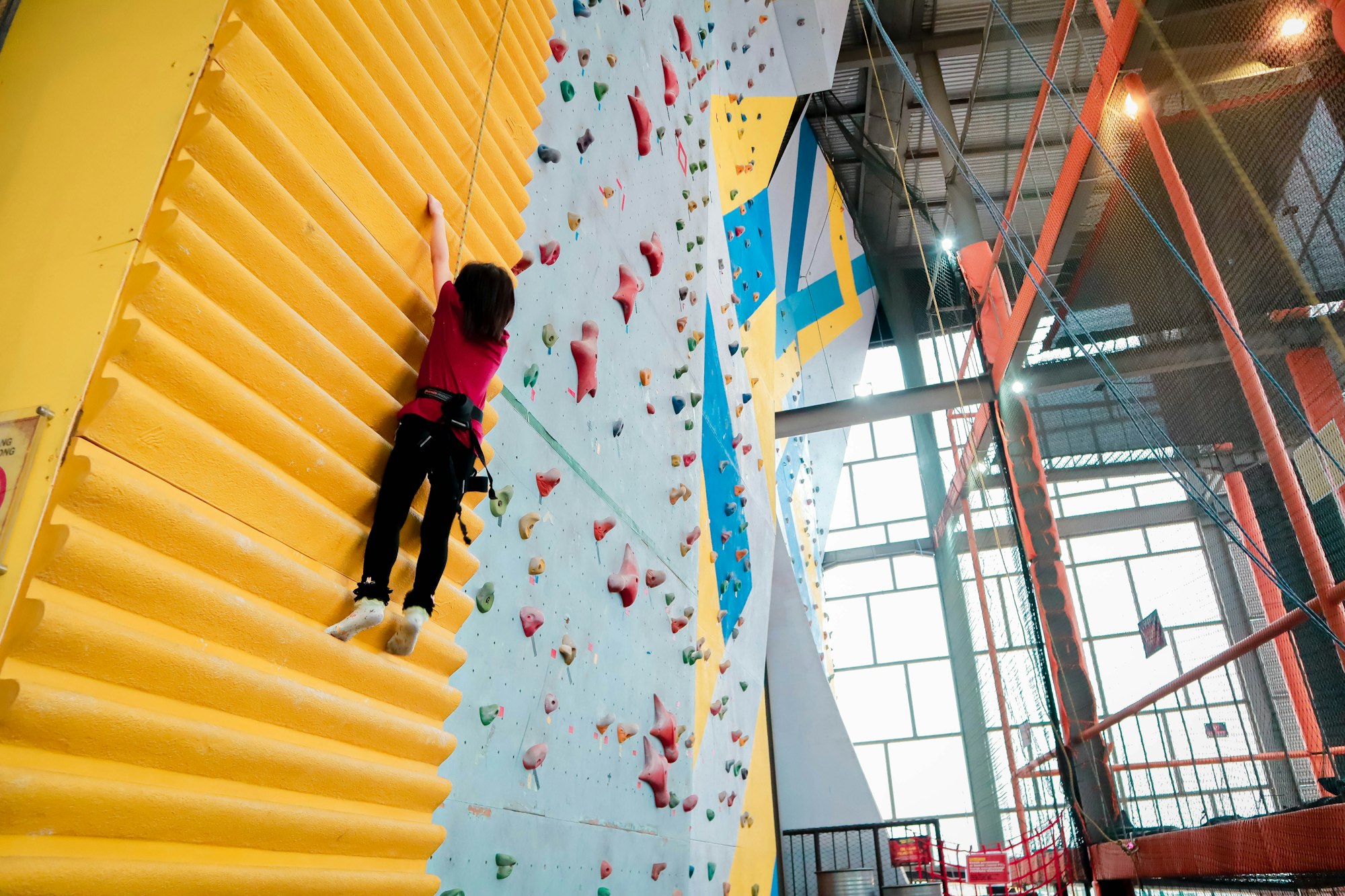When faced with the often overwhelming choice of where to channel your child’s boundless energy, the question isn’t just “Which sport?” but rather “How do you choose the right sport activity child so that their growth — physical, emotional, and social — flourishes?” Many parents lie awake, wondering if early exposure to competition fosters resilient minds, or if quieter children are neglected in bustling team games. Is swimming better than cricket for boosting bone density? Do personality differences justify letting a child quit football for chess? The path winds through developmental milestones, fluctuating interests, medical facts, and the delicate tango of family schedules. Here, the journey of choose the right sport activity child finds clarity: from understanding muscular and cognitive maturation to decoding motivation, every factor is dissected with care. Let’s uncover how tailored decisions safeguard your child’s well-being, uphold scientific evidence, and nurture a lifelong zest for active living.
Why Thoughtful Sport Selection is a Game Changer
Life, for a growing child, revolves around movement, experimentation, and discovery. Science is unambiguous: physical activity acts as a vital catalyst for muscle strength, neurodevelopment, skeletal growth, and metabolic balance. Regular engagement in sports reduces the risk of paediatric obesity, supports immunological resilience, and sharpens attention spans—ask any paediatrician tracking trends in classroom performance post-exercise.
Yet, does the research only extol biological benefits? Not quite. Well-chosen sports become launchpads for confidence, perseverance, and nuanced social intelligence. Consider: teamwork in football teaches trust and communication, while individual discipline in athletics sharpens focus and self-reflection. Winning, contrary to popular belief, isn’t everything. Scientific data consistently links enjoyment and intrinsic motivation with long-term participation—children who associate exercise with joy build healthier habits for life.
When parents choose the right sport activity child, barriers dissolve. Children learn about setting goals, recovering from setbacks, and celebrating small victories. These micro-moments of progress, often missed in academic pursuits, matter. The safe space sport provides also guides socialisation, peer bonding, and emotional regulation.
Key Factors in Choosing the Right Sport
Age and Developmental Abilities: Timing Matters
Is your toddler ready for structured sports, or is free play sufficient? Research pinpoints motor skill readiness as an essential prerequisite. For a preschooler (3–5 years), expecting complex team strategies sets them up for avoidable frustration. Instead, focus on basic movement skills (running, jumping) and fun games, sometimes incorporating balance and coordination.
Age-appropriate grouping in clubs or classes is not bureaucracy—it’s neuroscience at work. Children placed according to both chronological age and motor development display higher satisfaction and fewer injuries. When you aim to choose the right sport activity child, ask coaches about their approach to skill grouping, and never hesitate to reassess placement if your child appears overwhelmed.
Interests and Preferences: The Engagement Engine
Does your child gravitate towards the ball at every family picnic, or do they invent elaborate dance routines in the living room? Motivation to persist comes from genuine interest, not from performance pressure. Listen to what gives your child joy: what do they recall excitedly after school—was it a friendly cricket match or a solo time in the swimming pool?
Trial classes or sports samplers allow for hands-on discovery. Children may discover unexpected passions—a soft spot for rhythmic gymnastics, an instant dislike for noisy basketball courts. When families choose the right sport activity child, facilitating these explorations (and respecting sudden changes of heart) builds autonomy and prevents burnout.
Personality and Social Preferences: Tailoring the Experience
The outgoing chatterbox may thrive in a volleyball squad, but for a reserved or anxious child, individual sports like swimming or athletics offer comfort and safe social exposure. The science here is clear: mismatches between temperament and sport style often correlate with higher dropout rates and lower self-esteem.
Careful assessment leads to better choices. For children displaying leadership qualities, team captain roles might build confidence; for those craving predictability, structured routines in gymnastics or martial arts can work wonders. Keep asking: does your preferred approach to choose the right sport activity child account for their comfort in group vs. solo settings?
Motivation, Perseverance and Year-Long Commitment
Spotting a dip in enthusiasm after a rainy match? Par for the course. It’s the year-long commitment to a club—or an agreed duration—that teaches children about effort and perseverance. Rather than dropping out at the first sign of boredom, children benefit from gentle reminders about their choices.
Involving them early on fosters ownership: “You chose this sport, let’s keep going till summer break and then decide again.” Research notes that children who reach milestones (even minor ones, like perfecting a dive or scoring a single goal) develop more robust self-worth.
Family Logistics: Schedules, Location and Cost
What good is finding the perfect fit if every Saturday turns into a logistical nightmare? Family and child well-being trump all. When deliberating how to choose the right sport activity child, map out weekly calendars: Will after-school chess club clash with tuition? Is the basketball court too far, causing daily stress?
Quality time doesn’t always mean club membership. A weekend bicycle ride or playing badminton at a neighbourhood park can be just as impactful. Accessibility, affordability, and frequency matter—a close-to-home activity that aligns with academic responsibilities and leaves room for relaxation often endures.
Matching the Sport with Age and Abilities: Milestones That Matter
Early Childhood (Ages 3–5): Foundations First
Young kids need simple, playful engagement—think swimming, free dance, beginner gymnastics or unstructured games in the backyard. Focus rests on basic motor skills, spatial awareness, and learning joy in motion. No strict rules, no performance anxiety—just fun.
Primary School (Ages 6–9): Structure Emerges
This is the period where coordination and rule-following can blossom. Children are often ready for more structured environments—football, T-ball, basketball or swimming lessons. Emphasis stays on inclusion, discovery, and cooperation, with a measured introduction to group dynamics.
Tweens and Teens: Diverse Choices and Challenges
By now, children can handle complexity—think tennis, martial arts, athletics, or advanced team games. Skill acquisition, personal achievement, and healthy competition enter the scene, but remember: sustained enjoyment outranks a podium finish.
Individual vs. Team, Indoor vs. Outdoor: Weighing the Options
There’s no one-size-fits-all. Individual sports like tennis or gymnastics build independence and personal goal setting, especially for introverted children. Team sports boost belongingness, communication, and collective resilience—perfect for the extroverts.
Indoor activities ensure climate consistency and routine; outdoor sports reconnect children with nature, encourage vitamin D synthesis (sun exposure matters for bone health), and diversify sensory experiences. The answer to choose the right sport activity child often lies in experimentation and flexibility.
Supporting Their Journey: Parent Roles and Collaboration
Encourage, Don’t Pressure
Children thrive in environments free from unnecessary pressure to specialise early or to seek only victory. Allow for trial and error. A year of basketball followed by a move to badminton? Normal. What counts is the child’s sense of agency, not a single-minded pursuit of medals.
Choose Coaches, Not Just Sports
A supportive, well-trained coach—who values child safety, positive feedback, and psychological development—exerts profound influence. Proactive communication between parents and trainers reduces misunderstandings and adjusts expectations.
Achieving Balance: Sport, School and Family
Modern children navigate full schedules. Help them build realistic routines. Adequate sleep, regular meals, schoolwork and free play alongside sports practice—juggling all these prevents fatigue and anxiety. Regular family check-ins support boundary setting and adaptive planning.
Common Pitfalls: Specialisation Anxiety, Comparison, and Overload
Pushing for early specialisation? Medical research signals increased injury risk and emotional fatigue. The urge to compare siblings or peers breeds demotivation. Instead, view sport as an evolving journey—one shaped as much by joy and flexibility as by discipline.
Key Takeaways
- The foundation for choosing the right sport activity child lies in age-appropriate skill assessment, interest exploration, and logistical planning.
- Listen deeply to your child’s changing preferences and personalities; adaptability trumps persistence in the wrong fit.
- Prioritise enjoyment and holistic motivation over competition; participation sustains healthy development more effectively than pressure.
- Maintain balance between sporting commitments, academic pursuits, and family rest—well-being emerges from harmony, not sacrifice.
- When in doubt or at crossroads, expert guidance remains invaluable; tools and resources like the application Heloa can offer tailored advice and trusted health checklists, ensuring every family feels empowered and informed.
Questions Parents Ask
How to spot if my child is prepared for sport?
Wondering if your child can embark on a structured sport? Watch for physical readiness—can they follow instructions, show basic coordination, and seem enthusiastic about movement in school or park settings? Curiosity, not age alone, signals readiness. If hesitation persists, keep encouragement gentle and prioritise fun over performance; comfort naturally grows with experience.
How to determine which sport syncs with my child’s personality?
Confused between team games and individual activities? Observe: is your child happiest in group activities or when solving challenges alone? Outgoing personalities value team camaraderie and shared victories, while quieter kids might find happiness chasing personal bests in tennis or swimming. Be patient—interests can shift rapidly before settling.
What to do if my child dislikes the chosen sport?
Disenchantment isn’t uncommon. Initiate a candid chat—sometimes discomfort stems from minor issues (a strict coach or new teammates). If disinterest persists, assure your child it’s perfectly valid to try something else. Remember, the objective is to help choose the right sport activity child which sustains motivation, joy, and health, even if it means switching.
Are there health risks in certain sports for my child?
Each sporting discipline carries unique physical demands—proper technique and supervision reduce injury risks, while overtraining or early specialisation can heighten them. Always consult qualified paediatricians or coaches regarding safe practice loads. Hydration, well-fitted gear, and rest days are not optional extras, but essentials for safety.
How can I balance sport with studies and rest at home?
Juggling examinations, dance recitals and football games demands sound time management. Together with your child, draw up a weekly planner. Family discussions around priorities, realistic commitments, and downtime prevent exhaustion. Keep a pulse on signs of overcommitment: irritability, sleep changes, or declining interest.
Parental intuition, combined with medical wisdom and open communication, transforms how you choose the right sport activity child. If you crave customised support, the application Heloa remains a click away, bringing reputable advice and free child health checklists straight to your family’s hands.









